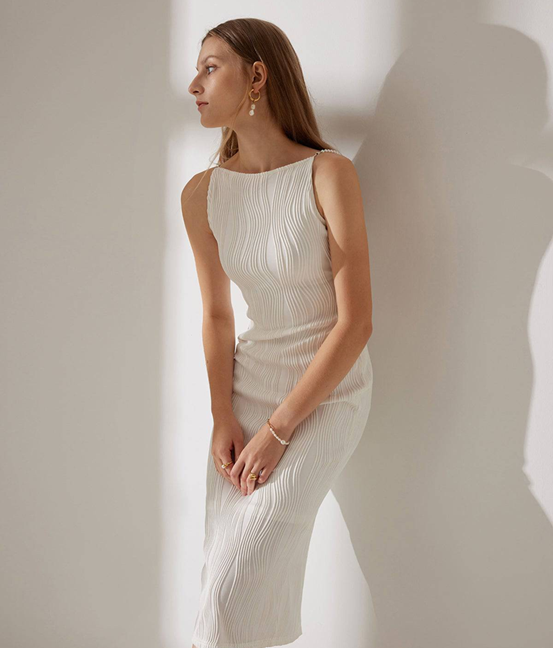In an industry often criticized for its environmental footprint, Marinzic stands apart as a beacon of responsible innovation. Today, we invite you behind the scenes to explore how sustainability forms the cornerstone of our brand identity—not as a marketing afterthought, but as a fundamental design principle.
Beyond Buzzwords: Our Sustainable Foundation
The fashion industry’s relationship with sustainability has evolved from niche concern to mainstream conversation. Yet amid the sea of “green” claims, meaningful action remains surprisingly rare. At Marinzic, sustainability isn’t a seasonal campaign or limited collection—it’s woven into every decision we make, from material selection to manufacturing partnerships.
“When we founded Marinzic, we committed to asking one crucial question before every decision: ‘Is there a more responsible way?'” explains Maria Chen, our Head of Design. “Sometimes the answer leads us to unexpected innovations, sometimes to traditional techniques we’ve nearly forgotten as an industry.”
Material Revolution: The Fabrics Reshaping Fashion
Our material selection process represents perhaps our most significant environmental impact opportunity. Each fabric in our collection undergoes rigorous assessment across multiple sustainability metrics:
Signature Sustainable Materials
Marinzic EcoFlow™
Our proprietary fabric blend combines organic cotton with polyester derived from recovered ocean plastic. The resulting material offers exceptional drape and moisture-wicking properties while diverting plastic waste from marine ecosystems. Each meter of EcoFlow™ repurposes approximately 25 plastic bottles, giving new life to materials that would otherwise contribute to ocean pollution.
Regenerated Cashmere
Our luxury knitwear collection features regenerated cashmere—a material created by collecting post-consumer cashmere garments, sorting them by color, and processing them back into premium yarn without additional dyes. The result is a sumptuously soft material with 95% less environmental impact than virgin cashmere.
Tencel Lyocell
This wood-based cellulosic fiber features prominently in our flowing silhouettes, from our bestselling Astra Dress to our signature Celestial Blouses. Produced in a closed-loop process that recovers and reuses 99.8% of the processing solvent, Tencel offers exceptional breathability with minimal environmental impact.
Deadstock Fabric Rescues
Our limited-edition capsule collections often incorporate premium deadstock fabrics—surplus materials from luxury mills that would otherwise be destroyed. This practice not only reduces waste but gives our customers access to truly unique pieces.
Certification Reality: Verifying Our Claims
Environmental claims require verification to carry meaning. Our sustainability practices are substantiated through partnerships with respected third-party certification bodies:
- Global Organic Textile Standard (GOTS): Verifies the organic status of our natural fibers from field to finished product
- OEKO-TEX® Standard 100: Ensures our materials are free from harmful substances
- Global Recycled Standard (GRS): Validates our recycled content claims
- B Corp Certification: Confirms our commitment to social and environmental standards across our entire business model
“Certification is crucial for accountability,” notes our Sustainability Director, Neela Patel. “It transforms sustainability from a vague concept into measurable metrics that we can continually improve upon.”
Manufacturing Mindfully: Our Production Partnerships
The environmental impact of a garment extends far beyond its materials. Our manufacturing partnerships reflect our commitment to responsible production practices:
Solar-Powered Production
Our primary manufacturing facility in Portugal operates on 87% solar energy, with plans to reach 100% renewable energy by 2026. The facility’s water recycling system captures and filters 94% of water used in production processes, dramatically reducing freshwater consumption.
Local Craftsmanship
For specialized techniques, we partner with artisanal workshops within 100 miles of our material sources whenever possible. This approach not only preserves traditional craftsmanship but significantly reduces the carbon footprint associated with transporting materials and components.
“The relationship with our production partners goes beyond transaction,” explains our Production Manager, Thomas Reid. “We view them as collaborators in our sustainability journey, constantly exchanging knowledge about more efficient, less impactful methods.”
Circularity in Action: Extending Product Lifecycles
True sustainability extends beyond production to consider a garment’s entire lifecycle. Our circularity initiatives include:
The Marinzic Renewal Program
Customers can return well-loved Marinzic pieces for store credit. Returned items are assessed for:
- Repair and Resale: Minor damage is expertly repaired, and items are offered through our “Second Life” collection at reduced prices
- Material Recovery: Garments beyond repair are disassembled, with usable materials incorporated into new designs
- Fiber Recycling: Any remaining textiles enter our fiber recycling stream for conversion into new yarns
Free Repair Services
All Marinzic garments include lifetime repair service for normal wear and tear, reflecting our commitment to longevity over replacement.
Design for Disassembly
Our newest collections incorporate innovative construction techniques that allow for easier separation of materials at the end of a garment’s life, facilitating more effective recycling.
Transparency Commitment: Our Sustainability Scorecard
We believe sustainability requires accountability through transparent reporting. Our annual Sustainability Scorecard provides detailed metrics on:
- Water usage per garment category
- Carbon footprint across our supply chain
- Waste reduction achievements
- Chemical management protocols
- Labor practices and fair wage certification
- Biodiversity impact assessments
“Publishing our sustainability data—including areas where we’re still working to improve—creates accountability to our customers and ourselves,” says our CEO. “It transforms sustainability from abstract concept to concrete action.”
The Human Element: Social Sustainability
Environmental responsibility represents only one dimension of sustainable fashion. Our commitment to social sustainability includes:
- Living wage certification across our supply chain
- Gender equality initiatives in our manufacturing partnerships
- Skills development programs in textile communities
- Transparent worker welfare reporting
Your Role in the Sustainable Fashion Movement
When you choose Marinzic, you’re not just selecting a garment—you’re casting a vote for responsible fashion. Here’s how to maximize the sustainability of your Marinzic pieces:
- Follow our specialized care instructions to extend garment life
- Participate in our repair and renewal programs
- Share your sustainability priorities with us to shape future initiatives
- Consider cost-per-wear rather than purchase price when evaluating value
Beyond Marinzic: Fostering Industry Transformation
We recognize that true sustainability requires systemic change beyond any single brand. Marinzic actively participates in industry coalitions working toward broader transformation:
- Sharing best practices through sustainable fashion forums
- Supporting policy initiatives for environmental regulation
- Mentoring emerging designers in sustainable techniques
- Funding research into next-generation sustainable materials
The Road Ahead: Our Sustainability Commitments
While we’re proud of our progress, we acknowledge that sustainability is a journey rather than a destination. Our commitments for the coming year include:
- Reducing virgin synthetic content by an additional 15%
- Implementing biodegradability standards for all trims and notions
- Expanding our water recycling capacity
- Developing innovative natural dye processes for our knitwear collection
“Perfect sustainability doesn’t exist in fashion yet,” acknowledges our Sustainability Director. “What matters is continuous improvement and transparent communication about both our achievements and challenges.”
We invite you to join our sustainability journey by exploring our current collection, designed with purpose and produced with care. Experience firsthand how beautiful design and responsible practices can coexist harmoniously—proving that the future of fashion can be both stylish and sustainable.




